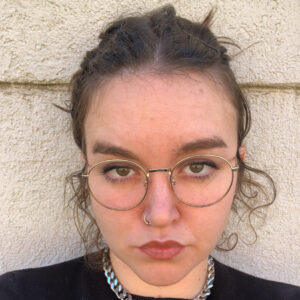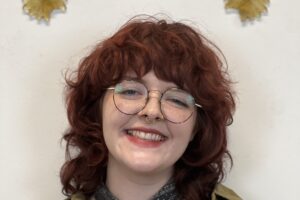
Generously funded by Nancy and Roger MacPherson and Barbara and Richard Wortley, the MacPherson-Wortley Emerging Artist Award is presented annually to three exemplary emerging
artists in the glass community. This prestigious juried award includes a cash prize, a special
lecture slot at the annual GAS Conference, a digital exhibition catalog, and a residency at the
Chrysler Museum of Art Perry Glass Studio.
“We are honored by the MacPhersons and Wortleys’ visionary commitment to emerging artists. Their support allows us to expand what our Emerging Artist Awardees receive; a larger cash prize and a residency can be remarkable opportunities for emerging artists as they seek to expand their practice,” said Brandi P. Clark, GAS executive director.
The MacPherson-Wortley Emerging Artist Award was juried by three glass community members who have a broad range of experiences and roles within the community. This year’s jurors were:
- Sachi Fujikake (Japan)
- Joshua Kerley (UK)
- Cydney Pickens (USA)
The 2025 MacPherson-Wortley Emerging Artists are: Karisa Gregorio (USA), Liz Markum (USA), and Jiemin Park (South Korea). Learn more about each artist below and don’t miss their lecture at the Texas 2025 Conference on Saturday, May 17 at 2:30 pm in the UTA University Center Red River Room.
 Karisa Gregorio is a stained glass artist from Philadelphia. She received her BFA in Craft + Material studies, with a major in glass and a minor in figurative illustration, from the University of the Arts in 2016. Gregorio’s work explores themes such as sex, death, God, the Devil, pleasure, temptation, intimacy, love, lust, and indulgence. The relationship between glass and light in stained glass allows her to create works that feel alive. Using traditional stained glass processes, as well as processes learned from Judith
Karisa Gregorio is a stained glass artist from Philadelphia. She received her BFA in Craft + Material studies, with a major in glass and a minor in figurative illustration, from the University of the Arts in 2016. Gregorio’s work explores themes such as sex, death, God, the Devil, pleasure, temptation, intimacy, love, lust, and indulgence. The relationship between glass and light in stained glass allows her to create works that feel alive. Using traditional stained glass processes, as well as processes learned from Judith
Schaechter, the depth and intimacy of the materials create a world in which the pleasures of the flesh and emotions of the heart are illuminated and illuminating.
Gregorio aims to one day create a cathedral in which enlightenment comes from the
experiences in life that, in her opinion, make life worth living. She seeks to create an
environment in which relationships between the viewer and work, and the relationships between people, are not limited, but allowed to be felt and fully indulged in.
 Liz Markum is a queer artist based in Texas whose work reexamines the remnants of the local natural world through a lens of curiosity and reverence. Using materials and processes such as cast glass, cast metal, print media, woodworking, and
Liz Markum is a queer artist based in Texas whose work reexamines the remnants of the local natural world through a lens of curiosity and reverence. Using materials and processes such as cast glass, cast metal, print media, woodworking, and
metalworking, they create sculptures that serve as reliquaries of ecology. They received their BFA in Sculpture at the University of Texas at Arlington in 2021 and their MFA in Sculpture at the University of North Texas in May of 2024.
Through the use of intentional materiality and layered structures, Markum turns the remains of creatures into experiences of wonder and introspection. The objects they create are embedded in an overlapping theoretical space between relics and fossils, sacred and secular. Each of the permanent materials they use (glass, porcelain, iron, and bronze) elevates different aspects of the creatures in life and death, calling upon their
lore and common associations to invoke dialogues surrounding them.
 Jiemin Park is a visual artist from South Korea. She received her BFA from
Jiemin Park is a visual artist from South Korea. She received her BFA from
Hong-ik University in Seoul and an MFA in glass from Rhode Island School of Design. Park was awarded ‘Young Craftsman of the Year’ for 2024 from YÉOL Foundation. She had a solo exhibition at Urban Glass in New York City and a group show at Blowfish Gallery in England and the Venice Glass Week Hub exhibition in 2024. She was invited to a Visiting Artist Residency at the Museum of Glass, Tacoma and her works were selected for New Glass Review 41 and 43.
Park began working with glass powder made from hot shop waste glass through a repeated process of observing, collecting and pulverizing. Just as new stars begin to form in space when cosmic dust combines with gas at extremely high temperatures and pressure, fused dust-like glass powder in a kiln creates a new composition of its own. Without the intention of creating an object or expressing anything, Park’s work focuses on the circularity of existence and disappearance through the repeating process of turning glass masses into dust and the glass dust back into the mass.
